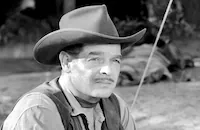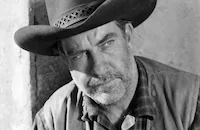Road to Alcatraz
Cast & Crew
Nick Grinde
Robert Lowery
June Storey
Grant Withers
Clarence Kolb
Charles Gordon
Film Details
Technical Specs

Synopsis
Late one night, attorney John Norton receives a telegram from his old friend and former fraternity brother, Gary Payne, informing him that his $2,500 investment in a business deal has just returned a large profit. When John tells his wife Kit about the investment he made in secret a year earlier, Kit tells him that she never trusted Gary. John explains the deal to Kit, and tells her that Gary, an engineer, needed some money to develop a process that would harden copper in a more efficient manner. He also reassures her that two other investors were involved: his law partner, Charles Cantrell, and financier Phillip Angreet. Kit and John return to bed, but the following morning, John finds evidence in his bedroom that he had been sleepwalking outdoors. Inside his pants pocket, John finds the same telegram from the day before, but addressed to Charles, and the key to Charles' apartment. While John feels a bump on his head and wonders how he got it, Kit discovers a gun in the living room. Confused, John goes to Charles' apartment, where he finds Charles' body and an abundance of evidence pointing to himself as the murderer. John tells Kit that although he does not remember killing Charles, he does recall that he was jealous of Charles' share of the profits. Later, Inspector Craven tells John that although Charles' house manager saw him leave Charles' apartment carrying a large bundle, he suspects that the killer is Charles' fiancée, Louise Rogers. While John hides the evidence that might incriminate him, Louise is arrested and charged with the murder. Louise, who has professed her innocence, tells John that she had no motive to kill Charles. A short time later, Angreet reminds John that it was his idea to add a clause in their contract stipulating that in the event of the death of any of the partners, the surviving partner or partners would receive all the shares. Angreet then informs John that he has left a note naming John as his killer in the event of his death. When Gary suggests to John that Angreet may have been the killer, John realizes that some of the evidence he found could also implicate Angreet. In the hopes of finding conclusive evidence to tie Angreet to the murder, John searches his home. Caught trespassing in Angreet's home, John attempts to force a confession from Angreet with a bluff. John escapes from Angreet's only to discover that the police now suspect him as the killer and are waiting to arrest him at his home. While hiding from the police in his basement, John finds a fraternity pin that he thought he had lost. He then eludes capture by the police and visits Gary at his Pittsburgh hotel room. There, John discovers that he has been wearing his fraternity pin all along, and that the one he found at his home belongs to Gary. John then accuses Gary of killing Charles, and Gary shoots him. The police arrive in time to arrest Gary, and John recovers.

Director
Nick Grinde
Cast

Robert Lowery
June Storey

Grant Withers

Clarence Kolb
Charles Gordon
William Forrest

Iris Adrian

Lillian Bronson
Harry Depp
Kenne Duncan
Willa Pearl Curtis
George Sherwood
Si Jenks
Frank Meredith
Bill Stevens

Lee Phelps
Billy Cartledge
Matty Roubert
Jack Daley
Tom London
Crew
Dwight V. Babcock
Richard Cherwin
Lucius Croxton
Russell Kimball
Herbert Kirkpatrick
Howard Lydecker
Theodore Lydecker
Bob Mark
Ernest Miller
George Milo
Sidney Picker
Jerry Sackheim
Armand Schaefer
Gordon C. Schaefer
Fred Stahl
John Stransky Jr.
Richard L. Van Enger
Don Verk
Howard Wilson

Film Details
Technical Specs

Quotes
Trivia
Notes
Although Francis K. Allan's surname is spelled "Allen" in the onscreen credits and contemporary reviews, the National Union Catalog lists his name as "Allan." According to Hollywood Reporter production charts, art diretor Lucius Croxton was borrowed from RKO for this picture.












